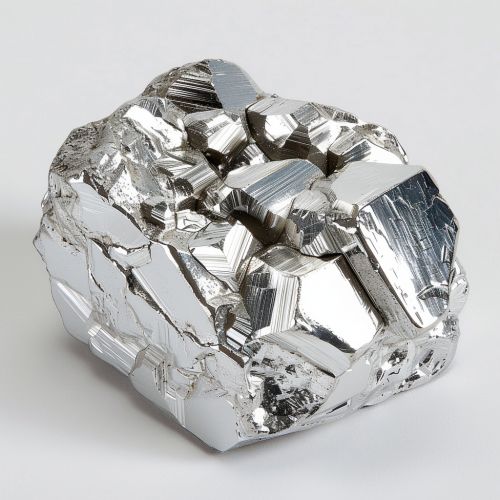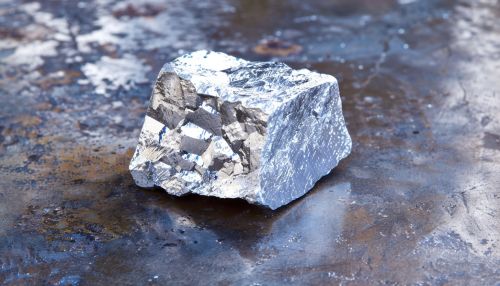Platinum group elements
Overview
The platinum group elements (PGEs), also known as the platinum group metals (PGMs), are a set of six transition metals that share similar physical and chemical properties. These elements are platinum (Pt), palladium (Pd), rhodium (Rh), iridium (Ir), osmium (Os), and ruthenium (Ru). They are located in the d-block of the periodic table and are characterized by their high melting points, resistance to corrosion, and excellent catalytic properties.
Properties and Characteristics
Physical Properties
PGEs are known for their exceptional physical properties, including high melting points, high densities, and excellent resistance to oxidation and corrosion. These properties make them highly valuable in various industrial applications. For instance, platinum has a melting point of 1,768°C and a density of 21.45 g/cm³, making it one of the densest and most heat-resistant metals.


Chemical Properties
Chemically, PGEs are noble metals, meaning they are highly resistant to oxidation and corrosion. They exhibit a range of oxidation states, typically from +1 to +6, which allows them to form various compounds. For example, platinum can exist in oxidation states ranging from 0 to +6, with +2 and +4 being the most common. This versatility in oxidation states is a key factor in their catalytic properties.
Occurrence and Extraction
Natural Occurrence
PGEs are typically found in nickel and copper ores, as well as in alluvial deposits. They are often associated with sulfide minerals such as pentlandite and chalcopyrite. The largest deposits of PGEs are found in the Bushveld Complex in South Africa, the Norilsk-Talnakh deposits in Russia, and the Sudbury Basin in Canada.
Extraction and Refining
The extraction of PGEs involves several complex processes, including flotation, smelting, and refining. Initially, the ore is crushed and ground to liberate the PGEs from the surrounding minerals. The ground ore is then subjected to flotation, where the PGEs are concentrated. The concentrate is smelted to produce a matte, which is further refined using hydrometallurgical and pyrometallurgical techniques to obtain pure PGEs.
Applications
Catalysis
One of the most significant applications of PGEs is in catalysis. Platinum, palladium, and rhodium are widely used as catalysts in automotive catalytic converters, which reduce harmful emissions from internal combustion engines. These metals facilitate the conversion of toxic gases such as carbon monoxide, hydrocarbons, and nitrogen oxides into less harmful substances like carbon dioxide, water, and nitrogen.
Electronics
PGEs are also crucial in the electronics industry. Platinum and palladium are used in the manufacture of electronic components such as capacitors, resistors, and connectors due to their excellent electrical conductivity and resistance to corrosion. Iridium is used in the production of spark plugs and electrodes for electrical applications.
Jewelry and Ornaments
Platinum and palladium are highly valued in the jewelry industry for their lustrous appearance, durability, and hypoallergenic properties. They are often alloyed with other metals to enhance their mechanical properties and are used in the creation of fine jewelry, including rings, necklaces, and bracelets.
Environmental and Health Considerations
Environmental Impact
The mining and refining of PGEs can have significant environmental impacts. The extraction processes generate large amounts of waste materials, including tailings and slag, which can lead to soil and water contamination. Additionally, the energy-intensive nature of PGE extraction contributes to greenhouse gas emissions. Efforts are being made to develop more sustainable extraction methods and to recycle PGEs from end-of-life products.
Health Implications
While PGEs are generally considered to be of low toxicity, exposure to certain PGE compounds can pose health risks. For example, soluble platinum salts can cause allergic reactions and respiratory issues in sensitive individuals. Occupational exposure to PGE dust and fumes in mining and refining operations can also pose health risks, necessitating the use of protective equipment and safety protocols.
Economic and Strategic Importance
PGEs are of considerable economic and strategic importance due to their rarity and diverse applications. The global supply of PGEs is limited, with South Africa, Russia, and Canada being the primary producers. The high demand for PGEs in various industries, coupled with their limited supply, makes them valuable commodities in the global market.
Future Prospects
The demand for PGEs is expected to grow in the coming years, driven by advancements in technology and increasing environmental regulations. Innovations in fuel cell technology, which utilize platinum as a catalyst, are likely to boost the demand for PGEs. Additionally, the development of new catalytic processes and the expansion of the electric vehicle market are expected to further increase the demand for these metals.
